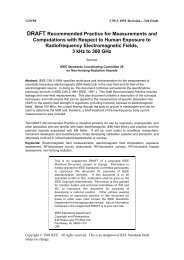An introduction to the quark model
An introduction to the quark model
An introduction to the quark model
Create successful ePaper yourself
Turn your PDF publications into a flip-book with our unique Google optimized e-Paper software.
Few-charge systems His<strong>to</strong>ry of <strong>the</strong> <strong>quark</strong> <strong>model</strong> Mesons Baryons Multi<strong>quark</strong>s and o<strong>the</strong>r exotics Outlook<br />
Mass inequalities for mesons and baryons<br />
If p is <strong>the</strong> perimeter and Y <strong>the</strong> minimal Toricelli path<br />
p<br />
2 ≤ Y ≤ p √ 3 ,<br />
The lower bound is saturated for a flat triangle, <strong>the</strong> upper one for<br />
an equilateral triangle, thus<br />
For <strong>the</strong> Hamil<strong>to</strong>nians<br />
H3 = p2 1<br />
1<br />
+ · · · + V ≥<br />
2 m 2<br />
From <strong>the</strong> variational principle<br />
V ≥ 1<br />
2 [v(r12) + v(r23) + v(r31)] .<br />
2 p1 2 m + p2 <br />
2 + v(r12) + · · · .<br />
2 m<br />
2 M(qqq) ≥ 3 M(q¯q) .<br />
Which becomes inverted with different masses, if M/m large<br />
( ¯ Q ¯ Q ¯ Q) + (qqq) ≤ 3 ( ¯ Qq) ,<br />
JMR Quark Model

















